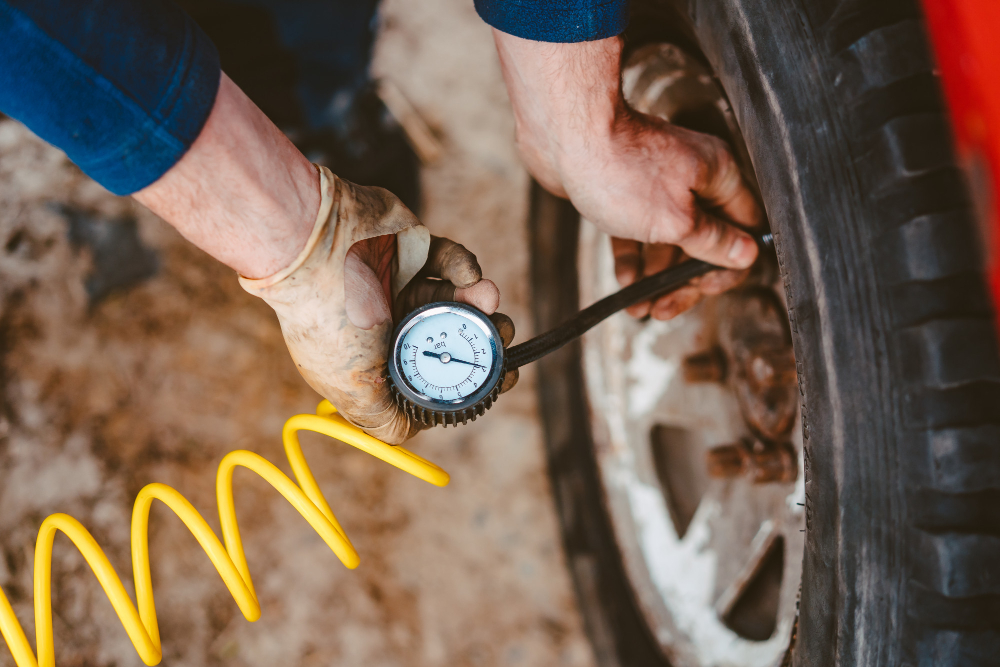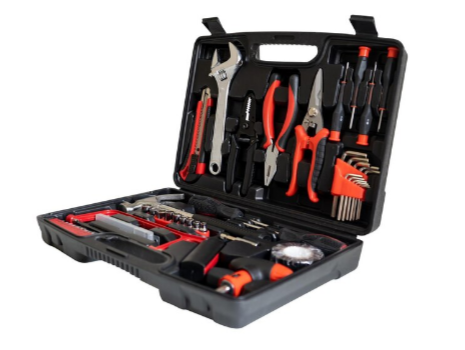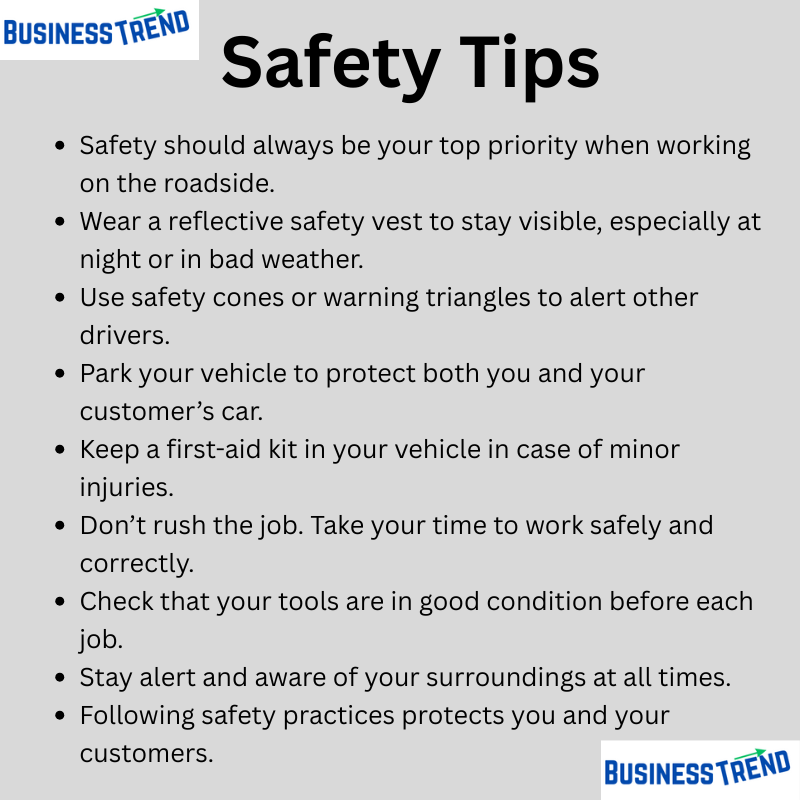Roadside assistance is a great business to start in 2025. You don’t need a tow truck. In fact, most drivers don’t need towing. They just need a jump-start, a tire change, unlock car or fuel. These small problems can be solved quickly. You can earn good money by doing it.
If you have experience with tools and helping people, you can start this business. There will be no boss. To start this business, you need a vehicle and some helping tools.
In this article, you’ll learn how you can start a roadside assistance business without towing. We have covered everything from services to register a business. You’ll get a complete guide about license, tools, pricing and ways to find customers.
What Services You Can Offer Without Towing
You can start this business without having tow truck. Most drivers face small problems. These problems can be fixed easily. Here is the opportunity for you.
Here are the common roadside services you can offer:
- Jump-starts: Dead batteries are a top reason drivers call for help. You can fix this in minutes with a portable jump starter.
- Flat tire change: Many people don’t know how to change a tire or don’t have the right tools. If you can do it safely, this is a fast and easy service to offer.
- Lockout help: Some drivers lock their keys inside the car. With the right tools and practice, you can unlock cars without damage.
- Fuel delivery: Drivers sometimes run out of gas, especially in rural areas. You can bring them enough fuel to reach the next station.
- Minor repairs: You can also help with small fixes, like replacing a worn-out belt or reconnecting a loose battery cable. Keep it simple and safe.
These services can resolve the problems. Without tow truck, you can offer your services and help people. You can run your business here.
In the beginning, offer the services you’re confident in. By gaining more experience, you can expand your business. Safety is very important in this business. Make sure you required level of skill. Helping people in trouble builds trust and grow business.
Understand Your Market and Target Customers
Make sure you know about the competition and your market before you launch your business. Understand who is your target audience and how to find them.
Look at nearby places first. Raise a few easy questions about yourself. What is the number of people who go for a drive every day? Is the area close to roads that are busy or more rural? Do drivers have frequent problems with being delayed or experiencing breakdowns? Good target markets will come to mind if you understand the answers.
Think of what your ideal customer looks like. Your most clients will be regular people. Some examples are people going to work, students enrolled in classes, drivers delivering packages or families spending time together. Full roadside coverage isn’t offered by all the companies. Some people don’t want to spend hours getting help. To close that gap, make your service quick, kind and simple to afford.
It is a good idea to look at nearby businesses. Check what kind of services they provide, note their costs and read the reviews written by their customers. Consult other people’s experiences and try calling the hospital to gather more information. This will show their strong points and areas where they need improvement. This knowledge enables you to provide something that customers value more such as a quick response or lowered prices.
Knowing who your customers are helps your business get off to a good start. This also keeps you from not wasting your time and money. Understanding your customers’ needs and wants allows you to create a business that helps them and draws them back.
Get the Right Licenses and Legal Setup
Before you start offering services, make sure your business is legal. This builds trust with your customers and protects you from future problems.
- Choose a name for your business.
- Make it simple, easy to remember, and related to roadside help.
- Make it simple, easy to remember, and related to roadside help.
- Register your business with your city or state.
- You can register as a sole proprietor, LLC, or another legal structure based on your needs.
- You can register as a sole proprietor, LLC, or another legal structure based on your needs.
- Check with your local government for licenses or permits.
- Rules vary by city and state.
- You may need a general business license, proof of insurance, or a background check.
- Rules vary by city and state.
- Get a tax ID if you plan to hire workers or expand.
- This helps with proper tax filing and avoids legal issues.
- This helps with proper tax filing and avoids legal issues.
- Talk to a local business advisor or visit your city’s small business office.
- They can guide you through the process and explain local requirements.
- They can guide you through the process and explain local requirements.
- Visit your state’s official website for help with business registration.
- Handling the legal setup early shows you are serious and professional.
- It also builds trust with your future customers.
- It also builds trust with your future customers.
- Once legal steps are complete, you can fully focus on growing your business.
You can use our Business Name Generator tool to get ideas for your business name.
Tools and Equipment You Need
To start roadside assistance business, you don’t need a lot of money. You can start your business with essential tools. In the beginning, buy only tools that you need. You can buy more equipment when business grows.
Here are the basic tools you should have:
- A portable jump starter to help with dead batteries.
- A good-quality lug wrench and jack for changing tires.
- A tire pressure gauge and a small air compressor.
- Lockout tools to help drivers unlock their cars.
- Gas canisters for fuel delivery.
- Flashlights and safety cones to stay visible during night calls.
- A basic tool kit for small fixes like battery cable tightening.
- A smartphone to take service requests and use GPS.




Always keep your tools cleaned and organized. Keep them in your car to get them in case of an emergency. Check your tools after completing every task to avoid problems.
Safety gear should always be in your travel backpack. Wearing gloves, a reflective vest and carrying a first-aid kit is necessary. They prevent hazards and help you do your job safely in hazardous areas.
It’s OK to get used or second-hand tools. Consider using previously used tools when you want to save some money. Just be sure the pair of glasses works properly. The right tools mean you can work more efficiently which makes customers happy.
When you have what you need, it proves you are professional and ready. Doing the job successfully increases the chances of getting more customers.
How to Set Your Prices and Payment Methods
Running a successful business means figuring out the right prices. You should give customers fair prices that will help you meet your expenses and earn a profit as well.
Check the websites of other local companies to find out what they charge for services. Look on their website pages or call to learn the details. Pick prices that other companies charge but keep in mind the impact your service quality and speed have on them.
Standard jobs like jump-starting a car, turning a tire or opening a lock can be charged with a set fee. As an example, you could charge a set fee for a jump-start, but ask for extra if the job requires travelling a long distance. Tell your customers exactly how much your service costs from the beginning. Telling customers the cost ahead of the work makes them comfortable.
Giving repeat customers a special deal might encourage them to return regularly. This helps to create a loyal customer base and motivate people to come back.
Let your customers have an easy time paying for your services. Allow for several ways to pay, for example cash, credit or debit cards or online systems such as PayPal and Venmo. Payments become faster and more convenient with a mobile card reader or an online payment app.
Always make sure to record every time you pay your bills. It helps to keep your financial records and pay taxes. When your customers see you take responsibility, trust in you increases.
How to Find and Keep Customers
Finding customers is one of the most important parts of your roadside assistance business. Without customers, your business cannot grow.
Start by telling friends, family, and neighbors about your service. Word of mouth is powerful and can bring you your first clients. You can also print simple flyers or business cards and leave them at local gas stations, car repair shops, or community centers.
Create a simple website or a Facebook page for your business. Include your services, prices, and contact details. Many people search online when they need help. Being easy to find online can bring you more calls.
Join local online groups and community pages. These places often have people asking for help with car problems. Answer questions and offer your service politely. This builds your reputation and trust.
When you get your first customers, focus on giving fast and friendly service. Arrive on time, solve the problem quickly, and treat customers with respect. Happy customers will tell others about you and call you again if they need help.
Ask satisfied customers to leave positive reviews online. Good reviews help new customers trust your business.
Finally, keep in touch with past customers. You can send a thank you message or a reminder that you are available anytime they need help. Building strong relationships keeps your business growing steadily.
By focusing on good service and smart marketing, you will find and keep loyal customers who trust you on the road.
Tips for Growing Your Roadside Assistance Business
Once you start, you want your business to grow steadily. Growing means more customers, more income, and a stronger reputation.
First, always improve your skills. Learn new roadside assistance techniques and stay updated with tools and technology. The more you know, the better service you can offer.
Next, expand your service area carefully. Start close to home, then slowly reach nearby towns or highways. This way, you avoid spreading yourself too thin and can keep response times fast.
Consider adding extra services that don’t require towing, like battery replacement or selling small car supplies. These services add value and attract more customers.
Invest in marketing as your budget allows. Try online ads, local radio, or sponsoring community events. Building a strong brand helps people remember you when they need help.
Always listen to your customers. Ask for feedback and use it to improve your service. Customers appreciate businesses that care about their experience.
Finally, keep your business organized. Track your jobs, expenses, and income carefully. Use simple software or apps to stay on top of your work and plan for the future.
Growing a roadside assistance business takes time and effort. Stay patient, provide great service, and keep looking for ways to improve. Success will follow.
Safety Tips for Your Roadside Assistance Business

Conclusion
Starting a roadside assistance business without towing is a smart way to enter the market with lower costs and less risk. By understanding your customers, getting the right licenses, and having the proper tools, you set a strong foundation for success.
Focus on clear pricing, easy payment options, and excellent customer service. Use smart marketing to find and keep loyal customers. Always work safely and keep improving your skills.
Remember, building a good reputation takes time. Stay patient and consistent. With hard work and dedication, your business can grow and become trusted by many drivers.
Starting small and growing step by step will help you build a reliable and profitable roadside assistance business. You can offer valuable help to drivers in need and create a business you are proud of.
Frequently Asked Questions (FAQs)
- Can you run a roadside assistance business without having a tow truck?
It is possible to do so. Services such as making a car run, changing flat tires, filling fuel into vehicles and entering locked vehicles are offered without a tow truck being used. Just having the right tools and basic information is all you need to begin. - Am I needed to get any special licenses or insurance plans?
Business licensing and liability insurance are usually required elsewhere. Always look up the rules where you are to avoid legal issues. - Is it important to ask about the necessary starting costs?
Getting started with $500 to $2,000 is fine for many people. You need to have basic tools, safety gear and marketing materials for this purpose. It is possible to build your business little by little over time. - What ways are there to locate customers at first?
Tell people around you first. Make use of social media, hang up flyers and be part of neighborhood groups online. Give excellent service so your customers let others know about your business. - What are the help I can offer besides towing?
Battery jump-starts, tires, lockout service, fuel, air for tires and basic roadside repairs are all within your powers.


1 Comment
Hey there.
businesshubtrend.com, Thanks for the time and heart you put into posting and moderating.
I recently published my ebooks and training videos on
https://www.hotelreceptionisttraining.com/
They feel like a hidden gem for anyone interested in hotel and management. These ebooks and videos have already been welcomed and found very useful by students in Russia, the USA, France, the UK, Australia, Spain, and Vietnam—helping learners and professionals strengthen their real hotel reception skills. I believe visitors and readers here might also find them practical and inspiring.
Unlike many resources that stay only on theory, this ebook and training video set is closely connected to today’s hotel business. It comes with full step-by-step training videos that guide learners through real front desk guest service situations—showing exactly how to welcome, assist, and serve hotel guests in a professional way. That’s what makes these materials special: they combine academic knowledge with real practice.
With respect to the owners of businesshubtrend.com who keep this platform alive, I kindly ask to share this small contribution. For readers and visitors, these skills and interview tips can truly help anyone interested in becoming a hotel receptionist prepare with confidence and secure a good job at hotels and resorts worldwide. If found suitable, I’d be grateful for it to remain here so it can reach those who need it.
Why These Ebooks and Training Videos Are Special
They uniquely combine academic pathways such as a bachelor’s degree in hospitality management or a master’s degree in hospitality management with very practical guidance on the front desk agent description. They also cover the hotel front desk receptionist job description, and detailed hotel front desk tasks.
The materials go further by explaining the hotel reservation process, check-in and check-out procedures, guest service handling, and practical guest service recovery—covering nearly every situation that arises in the daily business of hotel reception.
Beyond theory, my ebooks and training videos connect the academic side of resort management with the real-life practice of hotel front desk duties.
– For students and readers: they bridge classroom study with career preparation, showing how hotel management certificate programs link directly to front desk skills.
– For professionals and community visitors: they support career growth through questions for receptionist, with step-by-step interview questions for receptionist with answers. There’s also guidance on writing a strong receptionist job description for resume.
As someone who has taught hotel and management courses for nearly 30 years, I rarely see materials that balance the academic foundation with the day-to-day hotel front desk job requirements so effectively. This training not only teaches but also simulates real hotel reception challenges—making it as close to on-the-job learning as possible, while still providing structured guidance.
I hope the owners of businesshubtrend.com, and the readers/visitors of businesshubtrend.com, will support my ebooks and training videos so more people can access the information and gain the essential skills needed to become a professional hotel receptionist in any hotel or resort worldwide.
Appreciate you and your community.